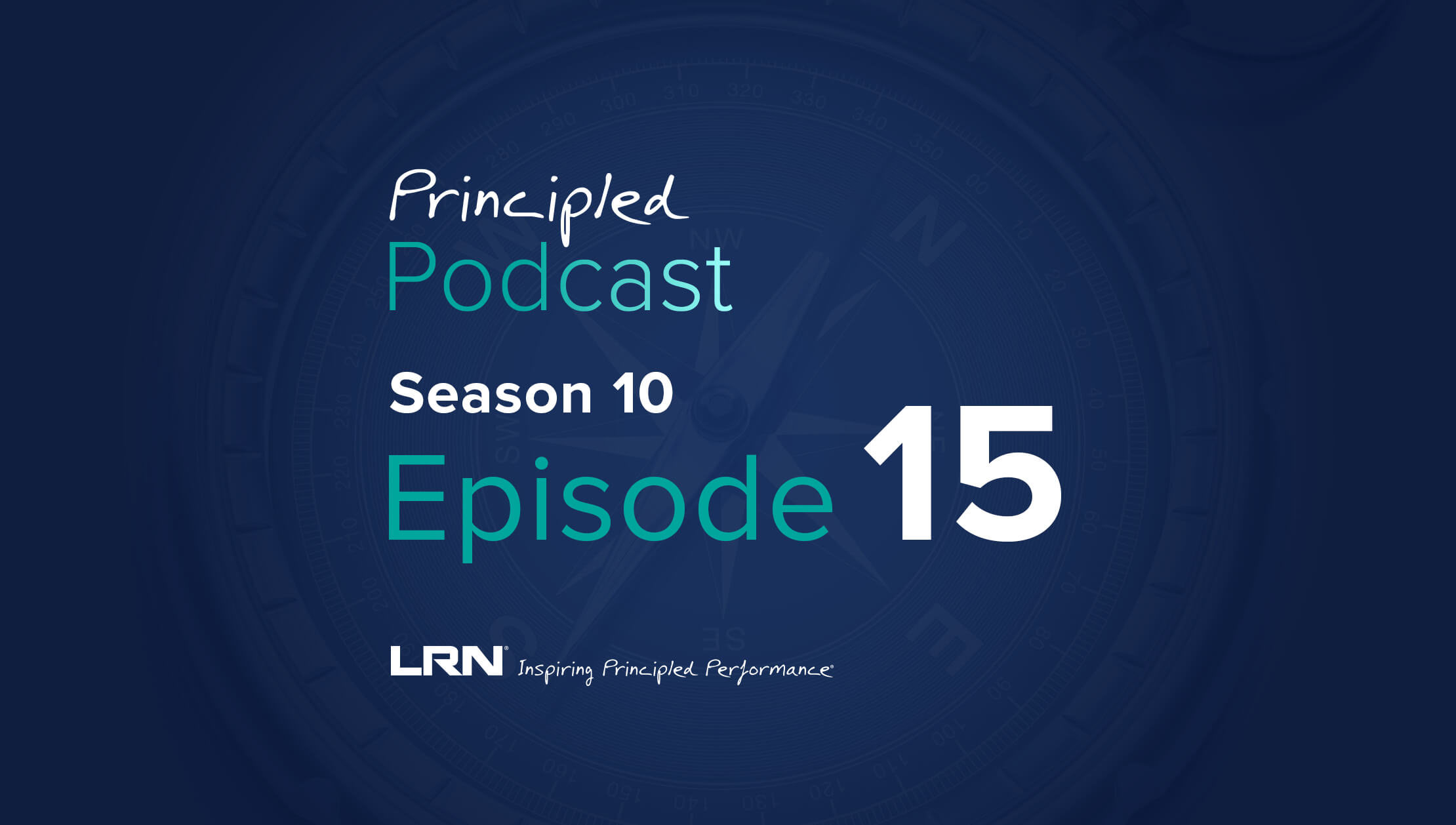This blog post is the second in LRN's “Strengthening the foundation” series, where we dive into research, best practices, and perspectives on building and maintaining ethical corporate culture at the employee, C-suite, and board levels. You can read the first post in the series here.
Leaders help us navigate challenging times. And there’s no doubt we’re living in complicated, even perilous moments. A pandemic. War. Economic instability. Political unrest. Racism. Climate change. Inequality. It’s a heavy burden.
When we look to people to guide us, now more than ever, we’re looking to business leaders. According to Edelman’s 2022 Trust Barometer, almost six in 10 employees choose a workplace based on shared values and expect their CEO to take a stand on societal issues. We want leaders to lead and this is particularly true at work.
In an era of multi-stakeholderism, where consumers and employees alike are looking for responsible businesses aligned with their values, leaders are called to commit to building a strong, ethical culture. It’s the expectation. Given that leaders cast a long shadow and have a disproportionate impact on culture, this work must start at the very top.
Why good leadership and ethical culture is important
LRN surveyed nearly 8,000 employees across 14 countries and 17 industries on various dynamics of workplace culture and conduct, the results of which are summarized in our Benchmark of Ethical Culture report. We found that corporate culture has a significant impact on employee retention and business results. Companies with the strongest ethical cultures outperform their peers by 40% across all measures of business performance: from levels of customer satisfaction to employee loyalty, innovation, adaptability—even growth.
The connection between culture and whether people stay at companies—or leave—is reinforced by research from MIT Sloan Management Review. They found toxic work culture is the biggest factor that leads to people quitting. It is 10 times more important than pay in predicting turnover.
9 examples of how to be a better ethical leader
With this in mind, how can you, as a leader, exercise your ethical culture muscle? Here are nine practices to reflect on and adopt to promote ethical culture within your organization.
1) Consider how your personal values align with the company’s
Before you lead others, you need to have conviction. The old adage you can only take care of others after you take care of yourself holds true as a business leader. What kind of leader do you want to be? What are your own personal values? And, how do they align or connect to your company’s value and purpose? Knowing what your north star is, and how that ties into the company’s north star, will help you articulate what you’re trying to accomplish—for yourself and for your team.
2) Reflect on what you’re modeling for others
Once you’ve connected your individual purpose to your company’s vision, you can start to lead your team on a shared journey. As you consider the road to pave for your team, be reflective: Are you creating the conditions for and modeling what you hope to see? What would that look like? What might you do differently?
Our research reveals that there is often a disconnect between the vision leaders in an organization are trying to convey and perceptions of other team members. You want to make sure you’re “playing by the same rules” as everyone else. Otherwise, your employees are likely to see right through you.
3) Ensure you’re cultivating an equitable work environment
Equity and inclusion are top of mind for Gen Z employees, which will make up one-quarter of the workforce in the next few years. A recent Tallo survey shows that 72% of Gen Z applicants seek a fair and ethical boss, 61% want the ability to be heard, and 87% say DEI strategies are very important. Focusing on this is essential for any leader looking to train up and lead a modern workforce.
4) Communicate openly and often
Transparency and openness is at the core of being an effective leader. Share the “why” behind decisions and requests you make. Also, connect to how it helps advance the company mission and reflects the ethics of your organization. Our research shows that a company’s core architecture—which includes corporate purpose and values, formal performance and incentive systems, and ethics and compliance programming—is reinforced and cascaded by leadership in how they model through words and action and recognize and champion the values-based behavior of their people.
5) Actively encourage your team to speak up
The dynamics of an organization’s core architecture influence work atmosphere, which in turn has a profound impact on what we call ethical performance: Whether people behave in alignment with values, behave ethically even when under pressure to meet deadlines or targets, and speak out about misconduct.
Transparency is a two-way street between leadership and team so encourage those you guide to speak up, ask questions, share ideas, and contribute to the overall discussion in the ways they are comfortable.
It’s not enough to just encourage your team to speak up. As a leader, you also need to “listen up.” Consider how you’re responding in words, actions, and body language. Would your response encourage people to speak up again, or are you shutting conversations down? How you respond to little things may impact whether someone returns to you with major concerns.
6) Seek to understand how things are working “on the ground”
Our research shows there is a divide in the experience of leaders and those on the front lines. The “leadership disconnect” is a long-studied corporate dynamic, whereby the further up the corporate hierarchy one is, the rosier one’s glasses tend to be. Our data reinforce this concept with senior leadership reporting scores on average about 11 percentage points higher than those of individual contributors across all dimensions of culture for an organization. As a leader, you play a large role in shaping organizational culture. So, it’s crucial to establish mechanisms to gain feedback from employees at all levels. Ask your employees: What do you value? How would you describe our culture? What should we change? How can I improve?
7) Hold yourself accountable as an ethical leader. It matters.
Don’t make promises you can’t keep and do keep all the promises you make. When you say “I’ll look into it,” you must really look into a situation—and then come back with an answer, even if it is one your team might not want to hear. Being accountable is one of the strongest ways to build trust with your team.
8) Celebrate your team
Recognize your team when they do something big. But, don’t just recognize what they achieve, but how they accomplish it. Connecting behavior to mission, values, and ethics sends a strong signal about what is valued.
9) Seek guidance on how to be a better ethical leader
Last, but certainly not least—find support. Continue to seek guidance from your E&C, learning and development, and people and culture teams. Find relevant outside resources that support your growth as an ethical leader. Encourage your organization to always keep values and purpose at the core of how you’re operating.
You can’t manage what you don’t measure, and you can’t measure what you don’t track. This is true when it comes to KPIs and it’s true when measuring how effectively you’re modeling ethical culture in your organization. Considering these points when reflecting on your leadership style will not only help you; it will support your team and model what it means to do the right thing at your organization.
The key takeaway
Ethical leadership is important to overall business performance, and becoming a more ethical leader requires commitment to building an ethical culture. These additional resources can tell you more about how to be a better leader and strengthen your organization’s cultural foundation:
- LRN Benchmark of Ethical Culture
- How corporate purpose is foundational to business innovation and success
- How well do you know your company culture? Ask these 4 questions.
This article was originally published in SmartBrief.



